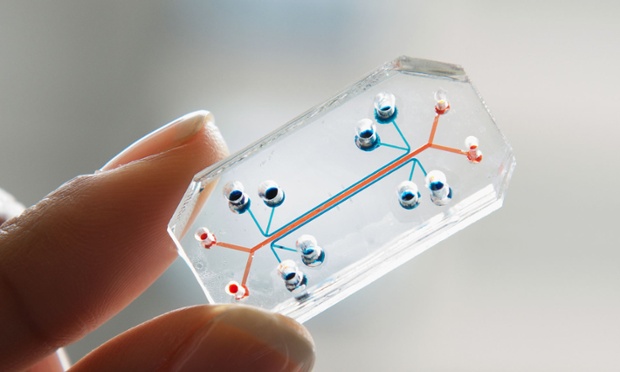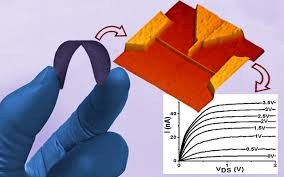 Scientists at Harvard University’s Wyss Institute have created silicon chips that mimic the function of living human organs. Their organs-on-chips technology won the 2015 Design of the Year award from the Design Museum in London. It’s the first time the award has gone to a design from the field of medicine, beating off competition from Google’s self-driving car, a project to clean up plastic from the sea and an advertising campaign to convince people to buy misshapen fruit. The micro-devices work by recreating the tissue interfaces of human organs inside a transparent polymer “chip,” so the behaviors of bacteria, drugs and human white blood cells can be easily monitored through a microscope. These new devices could end animal testing and revolutionize the development of new drugs. Learn more at the Wyss Institute.
Scientists at Harvard University’s Wyss Institute have created silicon chips that mimic the function of living human organs. Their organs-on-chips technology won the 2015 Design of the Year award from the Design Museum in London. It’s the first time the award has gone to a design from the field of medicine, beating off competition from Google’s self-driving car, a project to clean up plastic from the sea and an advertising campaign to convince people to buy misshapen fruit. The micro-devices work by recreating the tissue interfaces of human organs inside a transparent polymer “chip,” so the behaviors of bacteria, drugs and human white blood cells can be easily monitored through a microscope. These new devices could end animal testing and revolutionize the development of new drugs. Learn more at the Wyss Institute.
Category Archives: Tech Zone
Building Replacement Nerves Using 3D Bioprinting Techniques
Researchers at Michigan Technological University are using a 3D bioprinter to make synthesized nerve tissue. Their work could be used to help regenerate damaged nerves for patients with spinal cord injuries. Check out this video to see the 3D bioprinter in action:
The Next Stage of Wearable Technology: Printing Electronic Circuits from Liquid Metal
 Researchers from the Martinez Research Group in the Department of Biomedical Engineering at Purdue University have shown how standard inkjet-printers can be employed to produce flexible electronic circuits from liquid-metal nanoparticle inks. These elastic technologies could revolutionize medicine by making possible a new class of pliable robots and stretchable garments that people might wear for therapeutic purposes. Read more about the research recently published in Advance Materials.
Researchers from the Martinez Research Group in the Department of Biomedical Engineering at Purdue University have shown how standard inkjet-printers can be employed to produce flexible electronic circuits from liquid-metal nanoparticle inks. These elastic technologies could revolutionize medicine by making possible a new class of pliable robots and stretchable garments that people might wear for therapeutic purposes. Read more about the research recently published in Advance Materials.